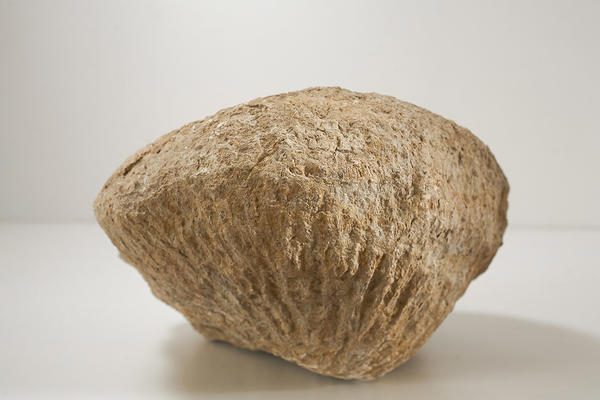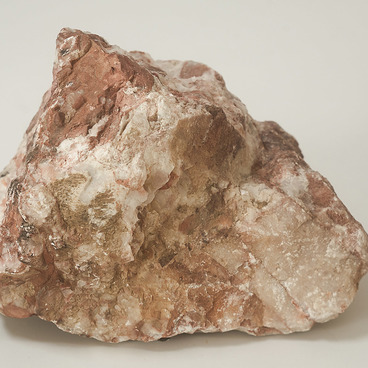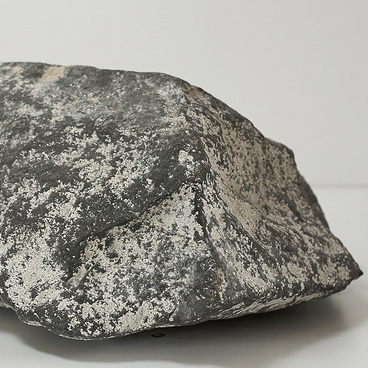This paleontological specimen was found near the city of Zelenogorsk, Kemerovo region, in 2013. It is a fragment of reef limestone, an organogenous sedimentary rock consisting of skeletons of coral colonies cemented by lime.
Let us make a journey into the past and travel 400 million years back. We will find ourselves in the middle of the Paleozoic era, when shallow warm tropical sea splashed on the territory of Western Siberia, and its water temperature never dropped below 20° С. Its rich fauna felt great, and marine life seethed and flourished.
The animal inhabitants of the ancient sea were brachiopod mollusks, sea lilies, conodonts and polychaete worms. Their fossils are stored in the collection of the Kemerovo Oblast Museum of Local History.
At the same time, huge reef belts appeared, stretching across modern Eurasia. In the Devonian period, their constructors were various algae, bryozoans and coral polyps, including the so-called tabuli, which then were at the time of their heyday.
The specimen presented to your attention belongs to the Favositida order (from the Latin ‘favus’ which means ‘bee honeycombs’) of the Tabulata subclass of extinct colonial corals. Massive, branched or spherical polypods of the favozites consist of tubular corallites (the so-called skeleton of a single individual of fossil corals) with a polygonal section.
Their walls are penetrated by connective pores for the exchange of nutrients located in one or more rows. The favozites propagated by annectent budding. New corallites originated in the corners between mature individuals or between their walls.
Inside each corallite there are calcareous skeletal elements: horizontal (bottoms and dissepiments) and vertical (septa, septal spinules). For the skeleton, they used calcite extracted from sea water, the main rock-forming mineral of limestone. Thanks to this mineral, coral polyps are attributed to reef-building organisms.
Exoskeletons of modern madrepore corals consist of aragonite, one of the natural polymorphs of calcium carbonate. Calcite and aragonite have different crystal lattices, and it is clear that there exist significant biochemical differences between modern coral polyps and their fossil relatives.
Coral limestones are extremely rich in fossils, allowing not only to determine the age of deposits, but also to take a closer look at the living organisms of bygone eras. It was established that at the end of the Devonian era, many groups of favosites sunk into oblivion. In the Carboniferous period, their composition was regenerated, and in Perm era the geological history of the tabular subclass ended with the final disappearance of all orders.
Let us make a journey into the past and travel 400 million years back. We will find ourselves in the middle of the Paleozoic era, when shallow warm tropical sea splashed on the territory of Western Siberia, and its water temperature never dropped below 20° С. Its rich fauna felt great, and marine life seethed and flourished.
The animal inhabitants of the ancient sea were brachiopod mollusks, sea lilies, conodonts and polychaete worms. Their fossils are stored in the collection of the Kemerovo Oblast Museum of Local History.
At the same time, huge reef belts appeared, stretching across modern Eurasia. In the Devonian period, their constructors were various algae, bryozoans and coral polyps, including the so-called tabuli, which then were at the time of their heyday.
The specimen presented to your attention belongs to the Favositida order (from the Latin ‘favus’ which means ‘bee honeycombs’) of the Tabulata subclass of extinct colonial corals. Massive, branched or spherical polypods of the favozites consist of tubular corallites (the so-called skeleton of a single individual of fossil corals) with a polygonal section.
Their walls are penetrated by connective pores for the exchange of nutrients located in one or more rows. The favozites propagated by annectent budding. New corallites originated in the corners between mature individuals or between their walls.
Inside each corallite there are calcareous skeletal elements: horizontal (bottoms and dissepiments) and vertical (septa, septal spinules). For the skeleton, they used calcite extracted from sea water, the main rock-forming mineral of limestone. Thanks to this mineral, coral polyps are attributed to reef-building organisms.
Exoskeletons of modern madrepore corals consist of aragonite, one of the natural polymorphs of calcium carbonate. Calcite and aragonite have different crystal lattices, and it is clear that there exist significant biochemical differences between modern coral polyps and their fossil relatives.
Coral limestones are extremely rich in fossils, allowing not only to determine the age of deposits, but also to take a closer look at the living organisms of bygone eras. It was established that at the end of the Devonian era, many groups of favosites sunk into oblivion. In the Carboniferous period, their composition was regenerated, and in Perm era the geological history of the tabular subclass ended with the final disappearance of all orders.



